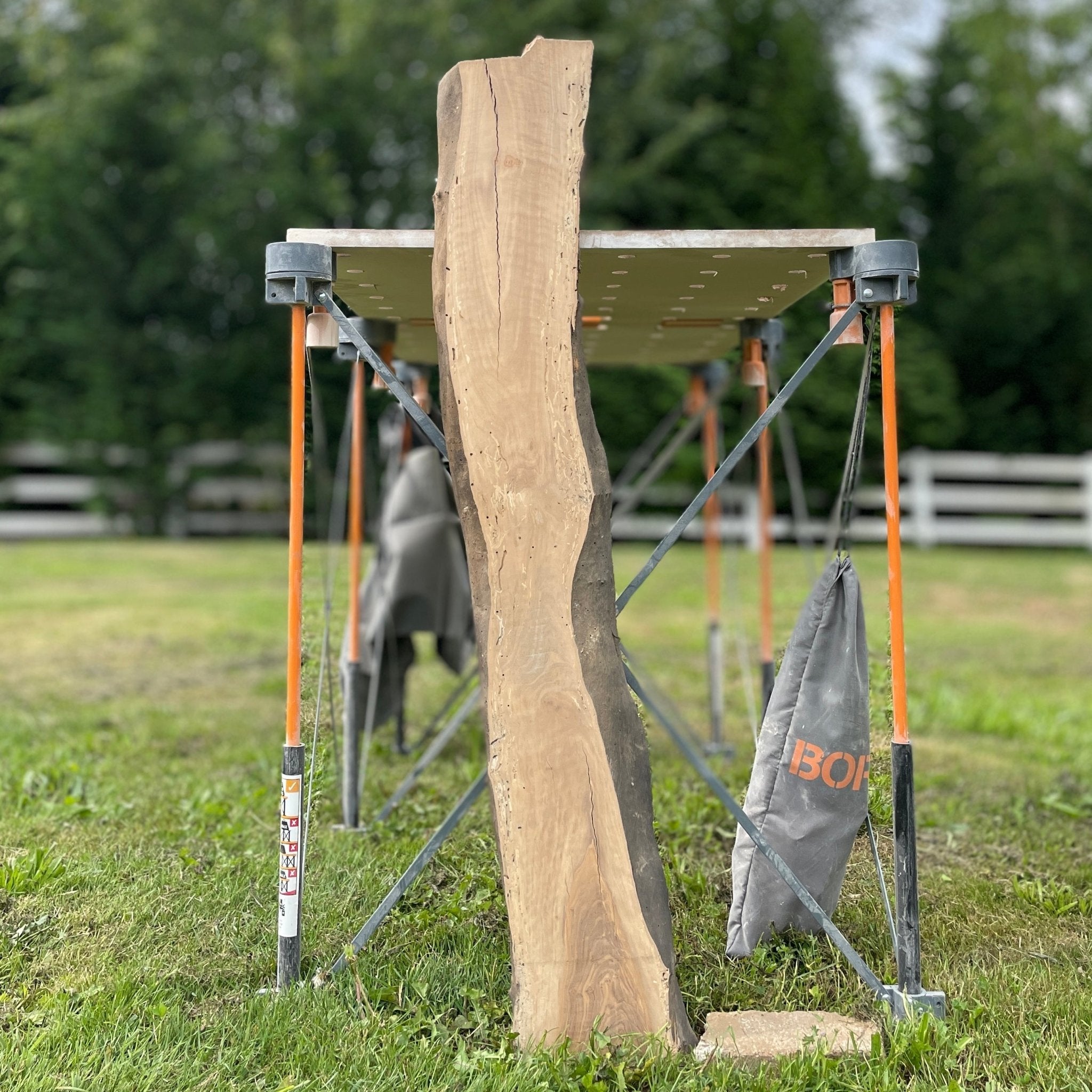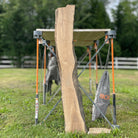LiveEdge Olive
Couldn't load pickup availability
Species: Olive
SKU: BGHLSOL75
Length: 38"
Width (Bottom): 5"
Width (Middle): 6"
Width (Top): 6"
Thickness: 1.5"
Board Foot: 2.24 BDFT
Weight Estimate: 9 Pounds
Origin: Battleground, Washington
Shipping Information:
-Slab Ships From: Battle Ground, Washington
-All slabs are subject to freighted shipping. Once purchased, we will contact you via email or phone to coordinate and secure the best negotiated shipping rate for your location. Shipping costs are based on your zip code, residential/commercial address classification, and whether a liftgate/forklift is required.
If you can't find a slab that perfectly fits your needs among our listed options, feel free to reach out to us directly. We can check our inventory for additional slabs that may suit your preferences.
Contact Information:
-Email: info@hamiltonleesupply.com
-Phone: 360.601.8388
Transform your vision into reality with our remarkable Live Edge slabs. Embrace the artistry of nature in your next woodworking project and create a unique masterpiece for your home.
Crafted with precision and attention to detail, this kiln-dried slab is project-ready, ensuring minimal wood movement and cracking. Our state-of-the-art iDry vacuum kiln removes moisture, guaranteeing its suitability for your project right away.
Please note that as each tree is unique, no two slabs are alike. This individuality guarantees that your furniture piece, whether it's a table, shelf, or any other creation, will be truly one-of-a-kind.
At Hamilton Lee Supply, we are committed to preserving and reusing stunning wood materials. Our focus on sustainability means that every slab tells a story and contributes to a greener future.
Common Names: Olive
Scientific Name: Olea spp. (including Olea europaea and O. capensis)
Distribution: Native to Europe and eastern Africa
Tree Size: Typically reaches heights of 2550 feet (815 meters) with trunk diameters of 35 feet (1.01.5 meters)
Average Dried Weight: Approximately 62 pounds per cubic foot (990 kilograms per cubic meter)
Specific Gravity (Basic, 12% Moisture Content): Ranges from .72 to .99
Janka Hardness: Approximately 2,700 pounds of force (12,010 Newtons)
Modulus of Rupture: Estimated at 22,530 pounds per square inch (155.4 MPa)
Elastic Modulus: Approximately 2,577,000 pounds per square inch (17.77 GPa)
Crushing Strength: Estimated at 11,180 pounds per square inch (77.1 MPa)
Shrinkage: Radial: 5.4%, Tangential: 8.8%, Volumetric: 14.4%, T/R Ratio: 1.6
Color/Appearance: Heartwood is creamy or yellowish brown with darker brown or black streaks. Color deepens with age. Olive wood can exhibit curly, wavy grain, burl, or wild grain patterns.
Grain/Texture: Grain may be straight, interlocked, or wild, with a fine, uniform texture and moderate natural luster.
Endgrain: Diffuseporous with small to medium pores, moderately numerous to very numerous. Pores are solitary or commonly in radial multiples of 23, or rows of 4 or more. Yellow heartwood deposits may be present. Growth rings may be distinct or indistinct. Narrow rays are not visible without a lens, with normal to fairly close spacing. Parenchyma is vasicentric but not distinct with a lens.
Rot Resistance: Reports vary, ranging from nondurable/perishable to durable/moderately durable. Olive wood is susceptible to insect attack.
Workability: Somewhat easy to work, but wild or interlocked grain can result in tearout during surfacing. High movement and poor stability in service. Turns well and glues and finishes nicely.
Odor: Has a distinct, fruity scent when being worked.
Allergies/Toxicity: Although severe reactions are rare, Olive wood has been reported as a sensitizer, with typical reactions including eye and skin irritation. Refer to Wood Allergies and Toxicity and Wood Dust Safety articles for more information.
Pricing/Availability: Limited availability due to the economic importance of olive trees for fruit production. Typically sourced from pruned branches, trimmings, or diseased/stormdamaged orchard trees. Short lumber, turning squares, and burls can be occasionally found from wild trees, including the closely related East African Olive (O. capensis). Prices are generally high.
Sustainability: Not listed in the CITES Appendices or on the IUCN Red List of Threatened Species.
Common Uses: Highly sought after for highend furniture, veneer, turned objects, and small specialty wood items.
Comments: Olive trees are valued for their olives, which are used to produce olive oil. Olive wood is prized for its unique appearance and is used in various highquality wood products. It is often confused with Russian Olive, but it belongs to a different botanical family, Oleaceae, and is more closely related to trees like Ash and Lilac.



